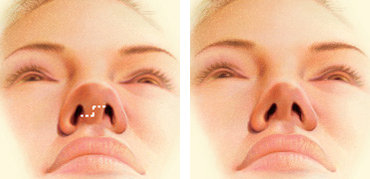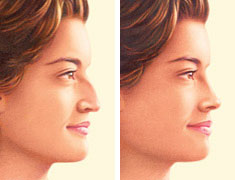https://www.plasticsurgery.org/cosmetic-procedures/rhinoplasty/preparation
How should I prepare for rhinoplasty?
In preparing for rhinoplasty surgery, you may be asked to:
- Get a lab test
- Take certain medications or adjust your current medications
- Stop smoking
- Avoid taking aspirin, anti-inflammatory drugs and herbal supplements as they can increase bleeding
Your plastic surgeon will also discuss where your procedure will be performed.
Rhinoplasty may be performed in an accredited office-based surgical facility, a licensed ambulatory surgical center or a hospital. Be sure to arrange for someone to drive you to and from surgery and to stay with you for at least the first night following surgery.
What are the steps of a rhinoplasty procedure?
Rhinoplasty surgery includes the following steps:
Step 1 – Anesthesia
Medications are administered for your comfort during the surgical procedure. The choices include intravenous sedation or general anesthesia. Your doctor will recommend the best choice for you.
Step 2 – The incision
Rhinoplasty is performed either using a closed procedure, where incisions are hidden inside the nose, or an open procedure, where an incision is made across the columella, the narrow strip of tissue that separates the nostrils.
Through these incisions, the skin that covers the nasal bones and cartilages is gently raised, allowing access to reshape the structure of the nose.
Open rhinoplasty incision across the columella
Step 3 – Reshaping the nose structure
An overly large nose may be reduced by removing bone or cartilage. Sometimes surgery of the nose may require the addition of cartilage grafts.
Most commonly, cartilage from the septum, the partition in the middle of the nose, is used for this purpose. Occasionally cartilage from the ear or rarely a section of rib cartilage can be used.
Step 4 – Correcting a deviated septum
If the septum is deviated, it can be straightened and the projections inside the nose reduced to improve breathing.
Step 5 – Closing the incision
Once the underlying structure of the nose is sculpted to the desired shape, nasal skin and tissue is redraped and incisions are closed.
Additional incisions may be placed in the natural creases of the nostrils to alter their size.
Step 6 – See the results
For a few days, splints and gauze packing may support the nose as it begins to heal. Get more information about rhinoplasty results.
What should I expect during my rhinoplasty recovery?
During your rhinoplasty recovery, a splint and/or packing may be placed inside your nose and a splint or bandages placed on the outside to support and protect the new structures during initial healing.
While initial swelling subsides within a few weeks, it may take up to a year for your new nasal contour to fully refine. During this time you may notice gradual changes in the appearance of your nose as it refines to a more permanent outcome.
Swelling may come and go and worsen in the morning during the first year following your rhinoplasty surgery.
You will be given specific instructions that may include:
- How to care for the surgical site
- Medications to apply or take orally to aid healing and reduce the potential for infection
- Specific concerns to look for at the surgical site or in your general health
- When to follow up with your plastic surgeon.
Be sure to ask your rhinoplasty surgeon specific questions about what you can expect during your individual recovery period:
- Where will I be taken after my surgery is complete?
- What medication will I be given or prescribed after surgery?
- Will I have dressings/bandages after surgery?
- When will they be removed?
- Are stitches removed? When?
- When can I resume normal activity and exercise?
- When do I return for follow-up care?
What results should I expect after rhinoplasty?
The results of rhinoplasty surgery will be long-lasting. While initial swelling subsides within a few weeks, it may take up to a year for your new nasal contour to fully refine. During this time you may notice gradual changes in the appearance of your nose as it refines to a more permanent outcome.
Rhinoplasty Before & After Photos
As your body ages, it is natural to have some gradual changes to your face including your nose. But most of your improvement should be relatively permanent.
A healthy lifestyle and life-long sun protection will help extend the results of your new appearance.
What words should I know about rhinoplasty?
Cartilage
Connective tissue that forms the structure of the nose.
Columella
The narrow strip of tissue that separates the nostrils.
Deviated septum
Cartilage that separates the nostrils is misaligned which may cause partial nasal airway obstruction.
General anesthesia
Drugs and/or gases used during an operation to relieve pain and alter consciousness.
Intravenous sedation
Sedatives administered by injection into a vein to help you relax.
Local anesthesia
A drug injected directly to the site of an incision during an operation to relieve pain.
Rhinoplasty
Surgery to reshape the nose.




